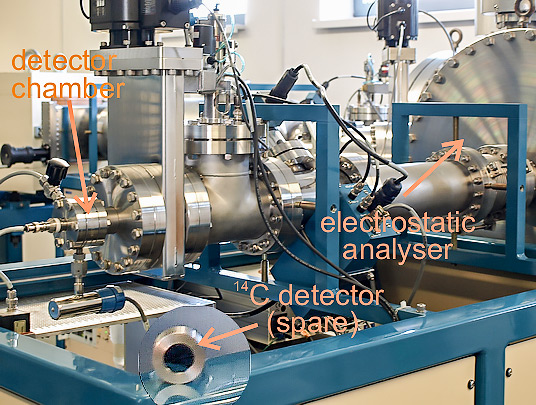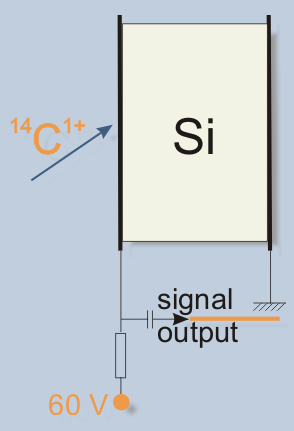14C detector is able to count and measure energy of single ions. In the “Compact Carbon AMS” it is used to count ions of 14C which passed through the electrostatic analyser. Information about energy is used to discriminate other particles, which accidentally passed all the analysers.


In the “Compact carbon AMS” system it counts 14C ions of 975 keV energy. For samples of modern material, the detector counts ca. 12,000 14C ions per minute. For samples of old material, it gives less than 10 counts per minute.
14C detector is a semiconductor silicon detector with surface barrier. It has sensitive area of 1 cm2 and energy resolution of 25 keV. Semiconductor detector is built like a large semiconductor diod. It is polarised with a constant voltage so that it does not conduct electric current. Passing-through high-energetic charged particle (like 14C ion in the AMS spectrometer), releases some number of free carriers of electric current (electrons and “holes”) and produces small scale discharge in the semiconductor volume. This can be detected as a single short-lasting voltage drop (pulse).
Other pages on the AMS spectrometer:
General | Ion source | Injection magnet | Accelerator | Analysing magnet | Drift tube | Electrostatic analyser | 14C detector
